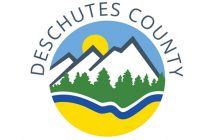(Photo | Pexels)
The Oregon Health Authority (OHA) announced a new pilot project that supports Oregon employers in adopting opioid overdose response programs as part of their standard workplace safety protocols. Through Reverse Overdose Oregon, employers are connected to training and tools to prepare staff to recognize an opioid overdose and administer naloxone. Naloxone is a life-saving medication designed to rapidly reverse an opioid overdose.
“We know that many opioid overdoses happen in public spaces and at workplaces, and employers have a powerful role to play in helping save lives and turn the tide of this epidemic,” said Dr. Dana Hargunani, OHA Chief Medical Director. “Most workplaces are already equipped with fire extinguishers and AEDs. We hope this pilot project will inspire more employers to build life-saving naloxone into the way they prepare for emergencies and create safe spaces for employees and customers alike. Together, we can tackle this critical challenge in our communities.”
On average, five Oregonians die every week from an opioid overdose, while many develop opioid use disorder and/or dependency. Oregon has one of the highest rates of prescription opioid misuse in the nation.
The pilot project includes an intentional effort to partner with and equip Native American communities with tools to identify and reverse overdose, especially since many Tribal communities have been significantly impacted by the opioid crisis. The State of Oregon, the nine federally recognized tribes in Oregon and the Native American Rehabilitation Association (NARA) have been working to address the opioid epidemic through comprehensive interventions.
Caroline Cruz, general manager for Health and Human Services for the Confederated Tribes of Warm Springs, said this about the work happening in tribal communities:
“We continue to further understand the trauma we as Native Americans have gone through, which has contributed to higher-than-average substance use disorders, but we also acknowledge how resilient we have been over the years, which gives us hope,” said Cruz. “We appreciate the funds OHA has provided us to target opioids and are combining our efforts with tribal best practices with this project. We continue to focus on the full continuum of care from prevention to treatment and aftercare. Our culture is prevention, our culture is treatment and our culture is making us healthier. Our strength is our tribal communities working together and sharing our practices with each other.”
Recent studies show how opioid dependencies affect the workplace. According to a 2019 survey from the National Safety Council, 75 percent of U.S. employers have been directly affected by opioids, but only 17 percent feel extremely well prepared to deal with the issue. Thirty-one percent have experienced an overdose, an arrest, a near-miss or an injury because of employee opioid use.
At the press event announcing the project, Steve Clem, senior vice president of Project Planning Services for Skanska, spoke about preparing construction workers to respond in an overdose situation.
“Opioid overdoses impact the construction industry. We see it as our responsibility to prepare workers to respond if someone is experiencing an opioid overdose on or near the job site. We recognize the opportunity workers may have to save someone’s life,” said Clem.
As part of the Reverse Overdose Oregon campaign, OHA will send 8,000 naloxone cases to businesses across Oregon. The case includes: gloves, rescue breathing mask and antiseptic wipes and instruction card for naloxone administration. Once naloxone is added to the case, employers have everything needed to reverse an overdose. OHA is also providing cases to tribes and county health departments that have opted into the campaign.
Reverse Overdose Oregon is part of the State’s comprehensive approach to address opioid-related harms that includes:
- Preventing opioid misuse, dependence and addiction
- Reducing overdose deaths
- Increasing access to opioid addiction treatment
- Supporting people in recovery
“We know this crisis is everywhere, we see and feel its impact deeply. And there’s a lot more work needed to address it,” said Dr. Hargunani. “Our goal is to save lives. By prioritizing promising interventions and continuing to work with communities, we will make a lasting impact.”
Heal Safely was also highlighted as another Oregon initiative underway.
Heal Safely: Launched in June 2019, Heal Safely is a prevention-focused campaign that empowers Oregonians to heal safely after injury or surgery. The goal is to help people learn about their options and talk to their doctor about safe, effective options that will help them rest, recover and get back to daily life, without the risk of prescription opioids.
Heal Safely initially launched in counties with the highest rates of prescribing: Coos, Curry, Tillamook, Lincoln, Crook and Jefferson Counties. In July 2019, the campaign was then extended to reach tribal communities, where it’s currently running as well as in Marion and Malheur Counties. OHA partnered with tribes and community groups across the state to promote Heal Safely and support their existing work on the ground. Since June, Heal Safely has received more than 47,000 visits to the campaign website, where people can access resources including a downloadable plan with questions to ask during a doctor’s visit. Heal Safely centers on the lived experiences of people from many communities across the state. To hear stories or learn more, visit the Heal Safely website.
Naloxone cases are available, while supplies last. To request a naloxone case, email: ems.trauma@dhsoha.state.or.us
Materials about Reverse Overdose Oregon can be found here. Or for more information, visit the Reverse Overdose website.




